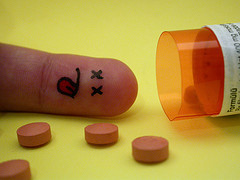
Photo by Bayat on Flickr
Two odd pieces of economic research have been highlighted in the Ig Nobel Prizes, awarded each year by the magazine the Annals of Improbable Research.
The first study examined tips given to lap dancers. Unfamiliar with lap-dancing, Geoffrey Miller and colleagues read up on the relevant sociological and feminist literature before getting eighteen dancers to record their earnings for two months. They found that earnings were greater when the dancers were ovulating: the male patrons expressed a preference for dancers who were currently fertile, even if not consciously aware of the difference.
The other study was by behavioural economist Dan Ariely and colleagues, who found that the placebo effect of a pill was weakened when the pills were discounted in price. In other words, some medicines are more powerful in virtue of being more expensive.
The full references are Geoffrey Miller, Joshua M. Tybur, Brent D. Jordan (2007) “Ovulatory Cycle Effects on Tip Earnings by Lap Dancers: Economic Evidence for Human Estrus?” Evolution and Human Behavior, vol. 28, 2007, pp. 375-81; and Rebecca L. Waber, Baba Shiv, Ziv Carmon, Dan Ariely (2008) “Commercial Features of Placebo and Therapeutic Efficacy” Journal of the American Medical Association, March 5, 2008; 299: 1016-1017.
